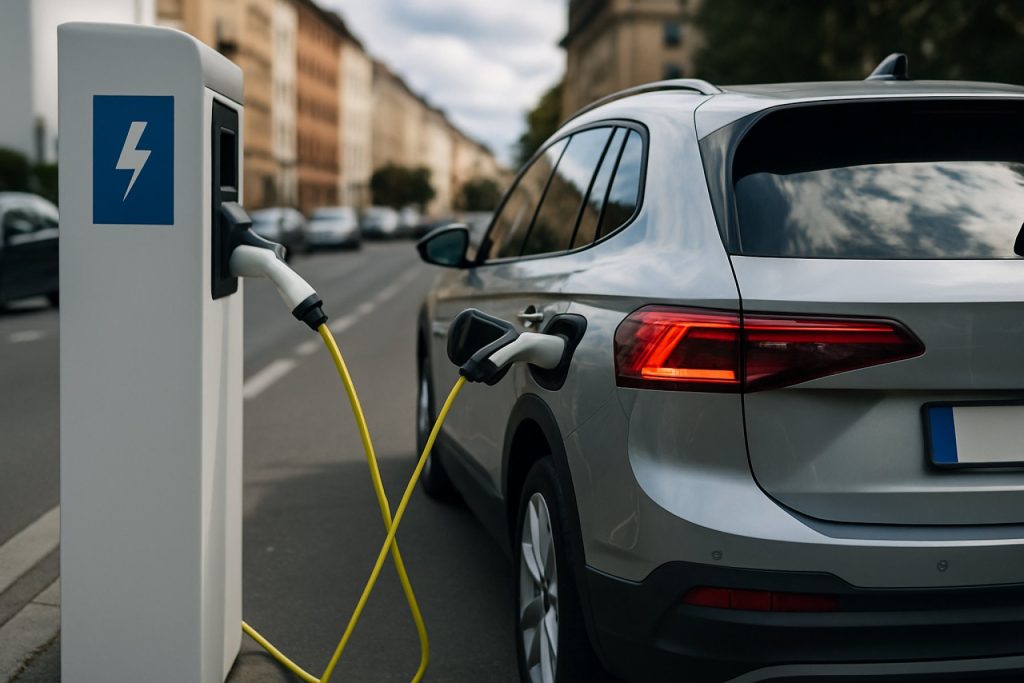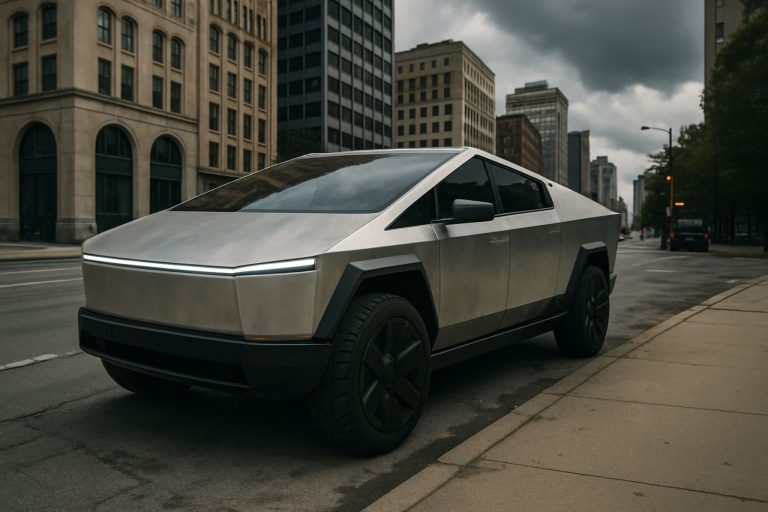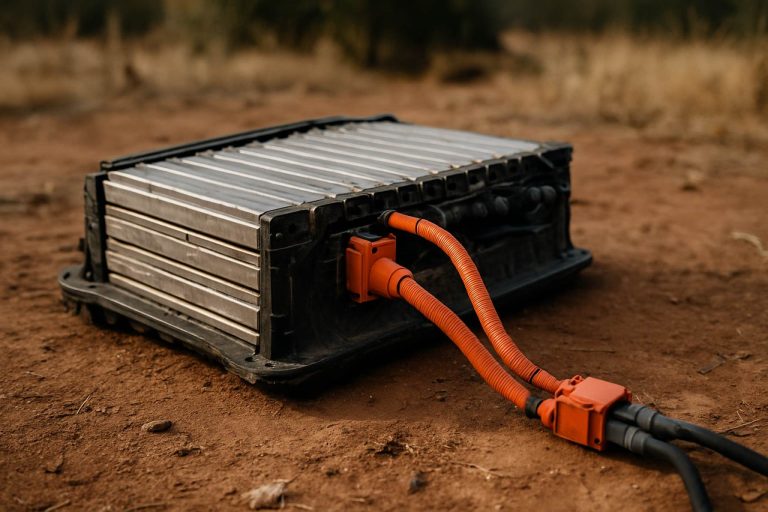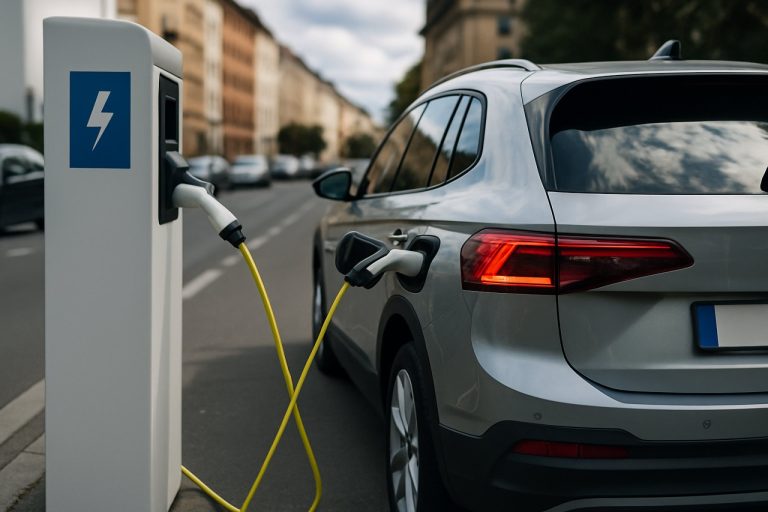
- BYD, China’s leading electric vehicle manufacturer, is establishing a major base in Szeged, Hungary, targeting annual production of 200,000 vehicles by 2026.
- The new facility will serve as a hub for logistics, high-tech manufacturing, and research, creating new jobs and advanced skills in Europe’s automotive sector.
- Hungary’s central location enables BYD to efficiently distribute vehicles across Europe, avoiding tariffs and delays.
- BYD’s European push directly challenges Tesla’s dominance, aiming to offer competitive electric hatchbacks, sedans, and SUVs built for EU buyers.
- Globally, BYD is expanding beyond China, increasing market share in Southeast Asia, Africa, Latin America, and planning operations in Brazil.
- Europe’s electric vehicle market is entering a new era of competition and innovation as BYD reshapes the landscape.
Industrial cranes hover above the flat plains of Szeged, Hungary, assembling a new future for the European automotive scene. Where once the likes of Audi and Mercedes-Benz set the pulse of innovation, a bold challenger now steps onto the stage. Build Your Dreams (BYD), China’s powerhouse in electric vehicles, is sparking a revolution that no one in the industry can ignore.
With precision and ambition, BYD is hardwiring its European base not just as a factory, but as a nerve center of logistics, cutting-edge research, and high-tech manufacturing. From this vantage point, BYD’s goal is electrifyingly clear: 200,000 vehicles rolling off Hungarian production lines each year. The first waves are set to surge onto European roads by 2026—ushering in new jobs, advanced skills, and a dramatic shift in how cars are made and moved across EU borders.
The selection of Hungary is more than convenient geography. This Central European hub, trusted by German giants, offers streamlined distribution into the heart of the continent without biting tariffs or delays. In a region where efficiency reigns, BYD has secured a front-row seat, ready to service a market that is hungry for alternatives.
Europe’s roadways, dotted with Tesla badges, now brace for a thunderous rival. While Tesla’s grip on European sales—especially in the UK and Germany—has faltered, BYD’s pulse only grows stronger. Recent figures show BYD surging ahead, even as broader Chinese EV exports slip. In Singapore, the brand already dominates, claiming the top sales spot in early 2025.
BYD’s electrified expansion isn’t just a European story. The company, now selling around half of its vehicles outside China, is stringing together a global network, with footprints growing in Southeast Asia, Africa, Latin America, and plans to ignite operations in Brazil by 2026.
Details on which BYD models will grace Hungarian assembly lines remain closely guarded. Speculation swirls around electric hatchbacks, sedans, and compact SUVs purpose-built to clash directly with Tesla’s Model 3 and Model Y. As scrappage plans and canceled projects create turbulence for longtime leaders, one thing is clear: Europe’s electric vehicle market is bracing for a new era of competition.
The takeaway? BYD’s foray into Hungary isn’t just another foreign investment; it’s the opening gambit in a contest that could reshape how Europe powers its mobility. While Tesla has defined the last decade of EV innovation, the next chapter may belong to the companies willing to innovate, expand, and adapt at lightning speed.
For European drivers—and the world’s automotive giants—the race has just been rebooted.
BYD’s Bold Move in Hungary: What It Means for Europe’s Electric Car Revolution
Introduction: BYD Sparks a Shockwave Across Europe
BYD’s entry into Hungary is making waves, drawing comparisons to the arrival of Japanese automakers decades ago. Set against Europe’s rapidly evolving automotive landscape, this surprise power play signals far-reaching implications for car buyers, industry workers, and policymakers alike. Let’s dive into what BYD’s arrival really means—and why it could be a game-changer for European electric vehicles.
—
Additional, Crucial Facts Beyond the Original Article
1. BYD: Industry Leader with Global Credentials
– World’s Largest EV Maker: In 2023, BYD overtook Tesla as the world’s largest EV manufacturer by quarterly sales, delivering more than 526,000 pure EVs in Q4 2023 (Source: Bloomberg).
– Technological Integration: Unlike most competitors, BYD designs and manufactures its own batteries, semiconductors, and powertrains—a “vertical integration” advantage that cuts costs and boosts quality.
– Blade Battery Technology: BYD’s signature Blade Battery offers enhanced safety and longevity compared to conventional lithium-ion tech, reducing fire risks—a major consumer concern (Source: Forbes).
2. Hungary’s Unique Position in the EV World
– Existing Automotive Cluster: Hungary already hosts major facilities from Audi, Mercedes-Benz, Suzuki, and BMW, making it a magnet for skilled labor and robust supply chains.
– EU Incentives: Hungary provides investment incentives such as tax breaks, land grants, and R&D subsidies for green tech and manufacturing.
– Strategic Logistics: Its central location minimizes logistics costs and bypasses EU tariffs on imports from outside Europe—a big advantage given recent moves in Brussels to hike tariffs on Chinese EVs.
3. Market Trends & BYD’s Competitive Strengths
– Affordable Pricing: BYD’s models are typically priced lower than European or American rivals, appealing to cost-conscious consumers as government EV subsidies wane. The BYD Seal, for example, has starting prices that undercut the Tesla Model 3 by around 10-20% in international markets.
– Range & Charging: Recent innovations have seen BYD deliver vehicles with 400–600 km real-world range on a full charge, and support for fast-charging infrastructure compatible with European standards.
– EU Expansion Blueprint: BYD already operates sales and service networks in Norway, Germany, the UK, and France, building brand familiarity ahead of local production.
4. Controversies & Limitations
– EU Tariffs and Scrutiny: The European Commission has launched investigations into Chinese government subsidies for EVs—potentially leading to retroactive tariffs if “unfair practices” are found (Source: Reuters).
– Intellectual Property Claims: Some critics allege that BYD and other Chinese firms rely on IP developed abroad, although BYD’s growing R&D budget (over $2 billion in 2023) aims to counter that narrative.
– Perception Challenges: European consumers may hesitate on warranty service, resale value, or the provenance of Chinese EVs versus German or Scandinavian brands.
5. Real-World Use Cases
– Fleet Adoption: Companies such as Uber and DHL are already piloting BYD’s ATTO 3 and e6 models for corporate fleets across Europe due to their lower running costs.
– Urban Mobility: The affordability and efficiency of BYD hatchbacks and compact SUVs make them ideal for city dwellers facing ultra-low emissions zone (ULEZ) mandates.
—
Pressing Questions Answered
– Which models is BYD likely to produce in Hungary?
While BYD hasn’t confirmed, auto analysts expect compact hatchbacks, sedans, and SUVs—the most popular segments in Europe. The BYD Dolphin, Seal, and ATTO 3 are strong candidates.
– How is BYD addressing sustainability?
BYD’s factories aim for carbon-neutral operations, with heavy investment in renewable energy use and closed-loop recycling for batteries.
– What is the pricing outlook for BYD’s European-made EVs?
With production in Hungary, BYD can potentially offer EVs that start below €30,000—making them some of the most accessible in the European market.
– How do BYD cars compare to Tesla and Volkswagen?
BYD matches or exceeds Tesla and Volkswagen in range and charging, and often undercuts them on price. However, Tesla still leads in software (Autopilot) and charging infrastructure.
– What security and warranty provisions are in place?
BYD offers European-standard warranties (approx. 6–8 years on batteries) and is rapidly expanding official service centers across the continent.
—
How-To: Get Ready for BYD’s EVs
1. Monitor Pre-Order Announcements: BYD will announce pre-orders and test drives via their official European site and local dealerships.
2. Compare Incentives: Check for national and local EV incentives, tax breaks, and free charging deals that can reduce ownership costs.
3. Plan for Home Charging: Invest early in a Type 2 compatible home charger to get the most out of BYD’s fast-charging capability.
4. Track Warranty Changes: Stay informed about service and warranty provisions to maximize resale price and ownership satisfaction.
—
Quick Tips & Actionable Recommendations
– Stay Informed: Follow official BYD news and reputable sites like Reuters or Europa for regulation changes.
– Test Drive Multiple Brands: Compare BYD models side-by-side with Tesla, VW, and Hyundai for a balanced perspective.
– Think Long-Term: Look beyond purchase price—factor in battery warranty, service network, and resale value when choosing any EV.
– Embrace Smart Features: BYD cars are increasingly compatible with Apple CarPlay, Android Auto, and over-the-air software updates.
—
Final Verdict
BYD’s factory in Hungary is more than just an industrial footprint—it’s a signal that the European EV landscape is changing fast. With competitive pricing, robust technology, and increasingly local production, BYD is primed to fuel the next phase of Europe’s green mobility revolution. Stay tuned, stay informed, and be ready to seize the electric future!
Keywords: BYD Hungary EV factory, BYD vs Tesla, European electric car market, Chinese EVs Europe, BYD Blade Battery, Hungary automotive industry, EV incentives Europe, BYD ATTO 3, export markets BYD.
For more on electric vehicles from the world’s top players, visit the official sites of Tesla and BYD.



